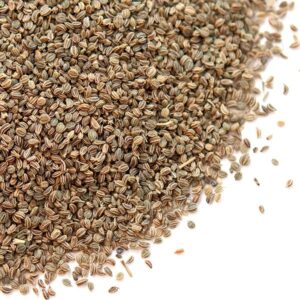Asafoetida: A Comprehensive Guide to Its Benefits, Uses, and Storage
Introduction to Asafoetida (Hing)
Asafoetida Powder, commonly known as “hing” in Indian households, is a powerful and aromatic spice derived from the resin of the ferula plant. Native to regions like Iran and Afghanistan, it plays a vital role in enhancing the flavors of Indian, Persian, and Middle Eastern cuisines. Despite its strong sulfurous smell, hing transforms into a pleasant and savory aroma when cooked, making it an irreplaceable ingredient in many dishes.
 Culinary Uses of Asafoetida
Culinary Uses of Asafoetida
Asafoetida is a flavor enhancer known for its ability to mimic the taste of onions and garlic in recipes. Here’s how it is used in cooking:
- Indian Cuisine:
- Widely used in lentil dishes, curries, and pickles.
- Often tempered in hot oil with spices like cumin or mustard seeds to release its full aroma.
- Vegetarian Cooking:
- Particularly popular in vegetarian diets as it adds depth and umami to dishes.
- Savory Bakes and Snacks:
- A pinch of asafoetida can add a unique zing to savory pastries or fried snacks.
Pro Tip: A small amount, usually the size of a pea or a pinch, is enough to season an entire dish for 4-6 servings.
Health Benefits of Asafoetida
Beyond its culinary uses, asafoetida is celebrated for its medicinal properties. Here are some Asafoetida benefits it offers:
- Digestive Aid:
- Reduces bloating, gas, and indigestion.
- Commonly included in home remedies for stomach ailments.
- Antimicrobial Properties:
- Helps fight infections due to its antibacterial and antifungal qualities.
- Respiratory Health:
- Often used in traditional medicine to relieve coughs and asthma.
- Rich in Antioxidants:
- May help combat oxidative stress and promote overall health.
Note: While many benefits are backed by traditional use, more scientific studies are required to confirm these effects conclusively.
How to Buy and Store Asafoetida
 Buying Tips
Buying Tips
- Pure vs. Compounded:
- Pure Asafoetida resin is potent but hard to find. Most available forms are compounded with starch or flour.
- Choose brands with minimal additives for better quality.
- Color and Texture:
- Should have a smooth texture and a strong but not overly acrid smell.
Storage Guidelines
- Store in an airtight container to prevent its strong smell from spreading to other ingredients.
- Keep it in a cool, dry place, away from direct sunlight.
- If buying in bulk, divide it into smaller portions to maintain its freshness.
Where to Use Asafoetida in Everyday Cooking
Here are some popular dishes where asafoetida shines:
- Dal Tadka (Lentil Curry): Adds a distinct flavor when tempered with ghee and spices.
- Vegetable Curries: Enhances the aroma and depth of the dish.
- Fried Snacks: Used in batters for pakoras or bhajiyas.
- Pickles and Chutneys: Provides a tangy undertone to these condiments.
Asafoetida Substitutes
If you’re out of asafoetida, try these alternatives:
- Onion and Garlic Powder: Mimics the savory taste.
- Leeks or Shallots: Work well in recipes that allow fresh ingredients.
- Chives: A milder option with a similar aroma.
Final Thoughts
Asafoetida is a powerhouse of flavor and health benefits. Whether you’re looking to enhance your recipes or improve digestion, this spice deserves a place in your kitchen. Experiment with hing in your dishes and discover how it transforms even the simplest meals into a gourmet delight.




